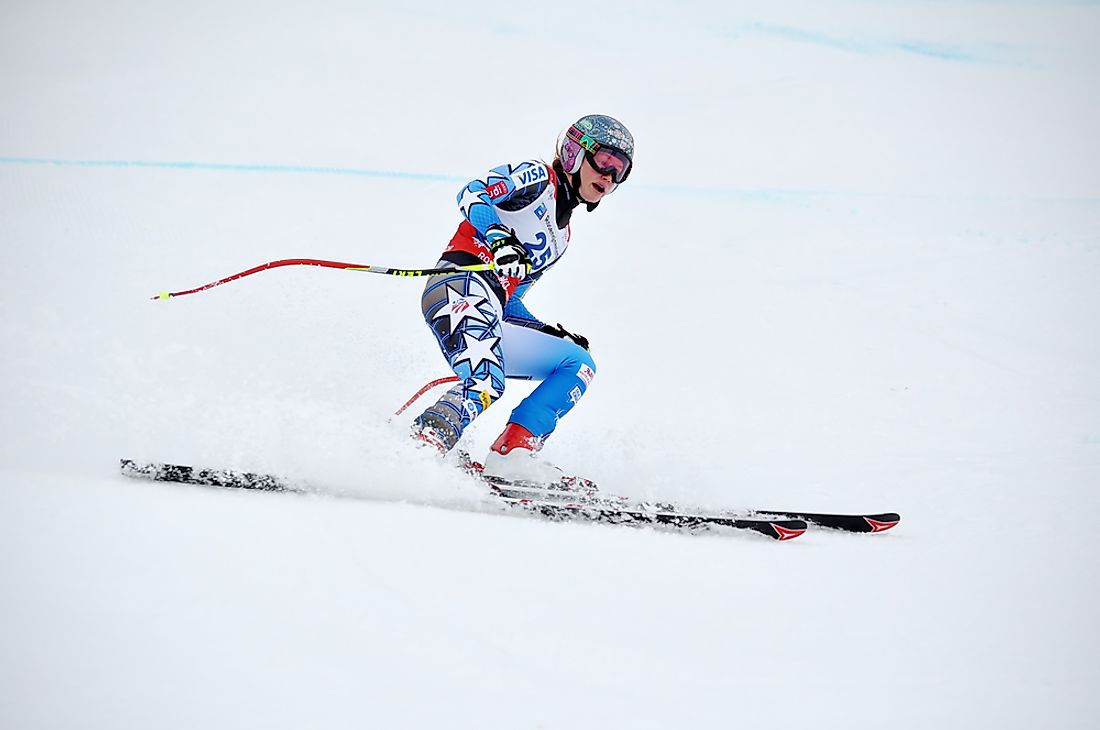Winter Olympic Games: Alpine Skiing

Alpine skiing, also known as downhill skiing, is a recreation or sport involving gliding down snow covered hills using skis that have fixed-heel bindings. The sport is distinguished by the need for mechanical aid to get to the top of the hill because the skis used in alpine skiing do not support efficient hiking or walking unlike the free-heel bindings skis used in cross-country skiing. Practice for alpine skiing commonly takes place at ski resorts because they offer services such as snow grooming, artificial snowmaking, ski lifts, restaurants, and first aid. Athletes who go skiing in the backcountry on unpatrolled or unmarked areas use alpine skiing equipment. However, in some cases, they use snowcats, snowmobiles, and helicopters to get to the top of a hill.
At the Winter Olympics
Since 1936, the sport has been one of events at the Winter Olympic Games except for the 1940 games. The first alpine skiing event took place in Garmisch-Partenkirchen, Germany during a combined event. During Olympic years, the Winter Olympics served as World Championships for alpine skiing from 1948 to 1980, but separate competitions also took place in even-numbered non-Olympic years. The International Ski Federation gave an additional medal of the same color to all Olympic medalists during this time. In 1988, alpine skiing returned as a stand-alone event at the Olympics, and the super giant slalom was also introduced at this event. As of 1985, the alpine skiing World Championships are held during every odd-numbered year apart from the Winter Olympics.
The Origin of Alpine Skiing
The sport of alpine skiing traces its roots back the prehistoric times following the discovery of different shapes and sizes of planks of wood that were preserved in Norway, Finland, Russia, and Sweden in peat bogs. The ski remnants that were found in Russia are believed to date back to circa 8000-7000 BC. In this regard, it is evident that some skiing was a fundamental part of life for many of years in colder countries.
The First Alpine Skiing Competitions
During the late 19th-century, skiing evolved from just a mode of transport to a sporting activity. The first skiing competitions that were non-military are believed to have taken place sometime during the 1840s in central and northern Norway. Similarly, the first alpine skiing competition took place in 1868, which was held in Christiania present-day Oslo, Norway. The competition was considered as the start of a new generation of skiing enthusiasm. Skiing later extended to other parts of the US and Europe where miners would hold competitions to keep themselves entrained during the winter season. Sir Arnold Lunn organized the first slalom which is an alpine skiing sport in Murren, Switzerland in 1922.
Medals
Austria has the most alpine skiing medals evidently dominating at the Winter Olympics championships with 34 gold, 39 silvers, and 41 bronzes bringing the total of medals to 114. Switzerland comes in second with 20 gold, 19 silver, and 20 bronze bringing their total number of medals to 59. The US follows behind at number three on the medal table list with 16 gold, 19 silver, and 9 bronze bringing the total number of medals to 44. Other countries that have had a significant number of medals include France with 45, Italy with 30, Germany with 26, Norway with 29, Sweden with 16, Canada with 11, and Croatia with 10. The next alpine skiing Winter Olympics championship is scheduled to be held in Pyeongchang, South Korea in 2018.







